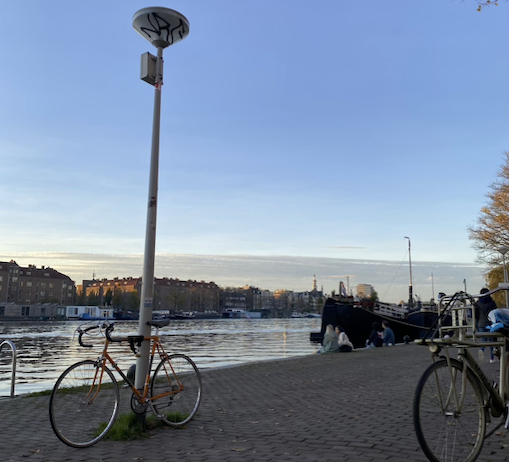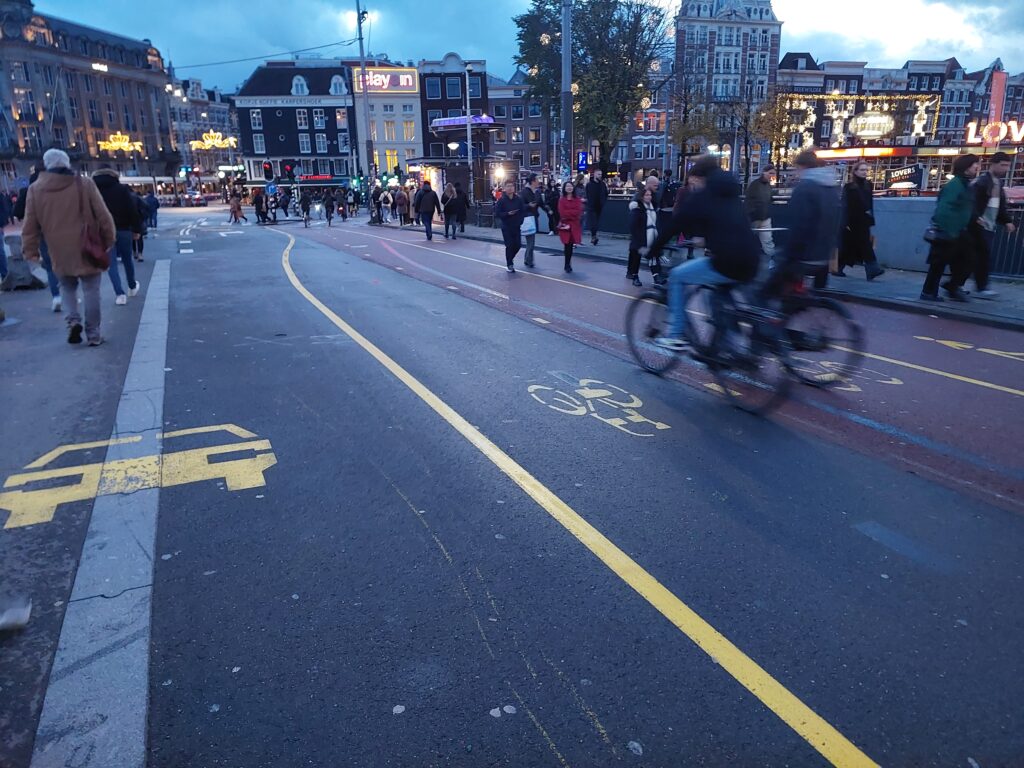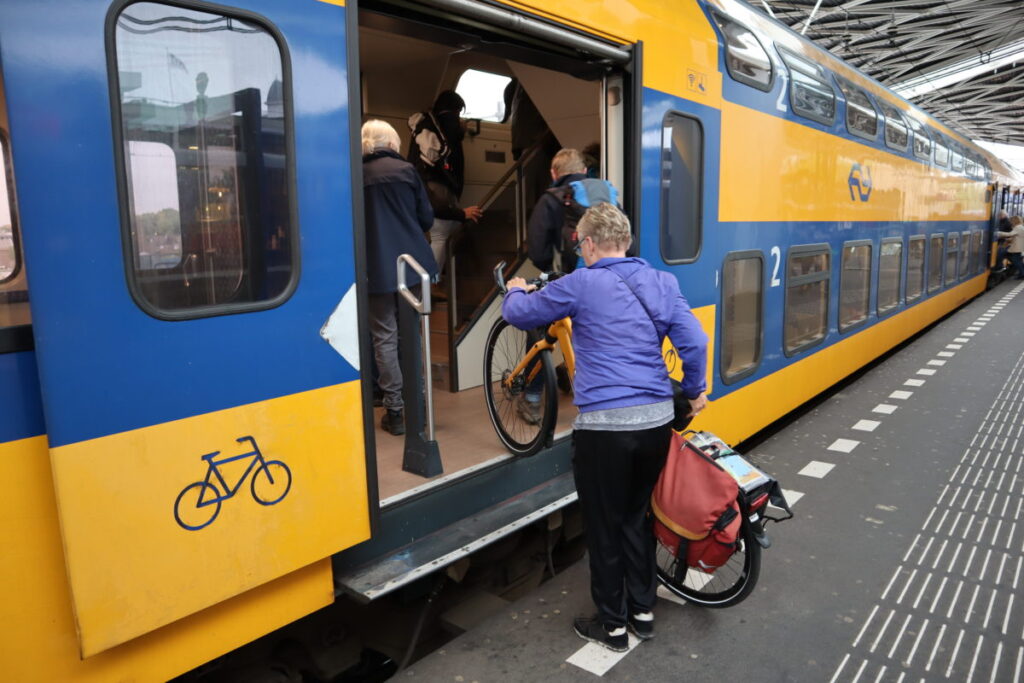Facundo Badino | Instagram
Selected final essay, published 21 July 2020
The author is a music theory teacher, piano teacher and vocal coach in Buenos Aires, Argentina. His bike is his main mode of transportation to get around in the big city. In his spare time he researches and captures the Argentine cycling culture and shares all the changes taking place through social media.
Unraveling the Cycling City MOOC on Coursera
Cycling as a mean of transport cannot flourish by itself if there is no political will to incentivise it. For this, “a truly interdisciplinary approach” needs to take place (te Brömmelstroet et al). The actual infrastructure is only half of the equation, because “building bicycle lanes without embedding them into a broader bicycle culture and politics is far too narrow (Oldenziel & de la Bruheze).”

The Dutch have been able to tame the car to make their cities more livable and now “more than 25 percent of all trips are made by bike (Glaser).” But, how did they do it? At first I thought it was due to a cultural factor. Some kind of Dutch “gene”, but the truth is that the solution didn’t come out of the blue. A major “oil and economic crisis, an intolerable number of traffic deaths” and a concerned government who had “the political will to deal with the situation” and saw the bike as a solution-provider shaped the future of the bike (Wagenbuur).
So, what defines a truly livable city? It is a compact city with a predominance of local streets that foster human interaction and establish a low speed limit for motorized vehicles. It also has a transport system that is “both sustainable and accessible” and an urban strategy with “multimodal urban regional developments” that are not segregated from one another with big uncrossable avenues or highways that only allow for car access (Bertolini & Le Clercq).
My question now is, how can we apply the knowledge that the Netherlands has to offer in a radically different environment, as the Metropolitan Region of Buenos Aires is? Cycling is not a structured means of transport in the sense that, unlike the car driver, the cyclist will choose unexpected routes, even on the same type of journey with equal conditions. So, it cannot be analysed and built for in the way motorised traffic is.
“We also need to understand human decision-making, attitudes, cultural preferences, the functioning of society, and even the inner working mechanisms of our cities (te Brömmelstroet et al).“ It’s unpredictable, and that’s what makes it beautiful. We can’t just copy-and-paste what the Dutch did in their country because “the Netherlands’ problems were and are not unique, so their solutions shouldn’t be that either (Wagenbuur).” I believe this statement applies to my city as well, so how do we incorporate this mode of transport so that it becomes viable?

Buenos Aires is a megacity of more than 14 million inhabitants in a space of 3.833 sq/km. To be honest, my first impression was that we needed to ban cars from the city and force everyone into cycling. That’s a bit radical, I know. Yet despite the metropolitan region of Buenos Aires being a perfect example of suburban sprawl, an approach that focuses on upgrading the existing railway system and adding a deeply integrated bike network could create competition for the car and provide a real alternative for citizens to have a choice. Such a network would require ample and safe bicycle parking, accessible rental schemes and well-maintained infrastructure.

Within the city centre a lot of progress has been made already to accommodate cyclists and pedestrians, through the so-called “pedestrian streets” and the construction of an extensive network of separate bicycle paths. In addition to this, a shared bike program has been running for the last decade. During 2019 it was completely modernized with digitalization and better safety equipment. What’s more, this system is completely free, so it fosters an egalitarian society.

Together with an active discouragement of car use, through the introduction of policies like car-free days and a city centre toll, a program to encourage and promote the use of the bicycle should be implemented. Such a campaign should stress the array of benefits bike use brings: economic, environmental, health, social interaction and happiness (Hulster et al).
With so much to take into account, what is the next step that needs to be taken in Buenos Aires? According to studies, South Americans are the most risk-taking cyclists (Piatkowski & Johnson). From my experience, I can confirm this is true. So, how can we adapt the system to this culture? How can we work on a city that has already married the suburban dream to make it more cyclable? Should we let car traffic demand dictate future infrastructure projects? Where will that take us? Whatever the approach, I believe it has to be done through a sincere dialogue between citizens, politics and urban designers.
Sources:
- Bertolini, L., Le Clercq, F., Urban Development without more Mobility by Car? Lessons from Amsterdam, a Multimodal Urban Region (Environment and Planning A 35(4):575-589, April 2003).
- Glaser, M., Unraveling the Cycling City (The University of Amsterdam- Urban Cycling Institute, 2020), video.
- Hulster, G., Gielen, A., te Brömmelstroet, M., Dirks, J., Why We Cycle (2017), video.
- Oldenziel, R., & de la Bruheze, A.A., Contested Spaces: Bicycle Lanes in Urban Europe, 1900-1995 (Transfers, 1(2), 2011), pp.29-49.
- Piatkowski, D., Johnson, A., Scofflaw bicycling: Illegal but rational (The Journal of Transport and Land Use, V.10, N.1, 2017), pp. 805–836.
- Te Brömmelstroet, M., Nello-Deakin, S., Quillien, Jenny, Bhattacharya, I., Towards a pattern language for cycling environments: merging variables and narratives (Urban Cycling Institute, 2018).
- Waagenbuur, Mark, How the Dutch Got Their Cycle Paths (BicycleDutch, 2012), video.



